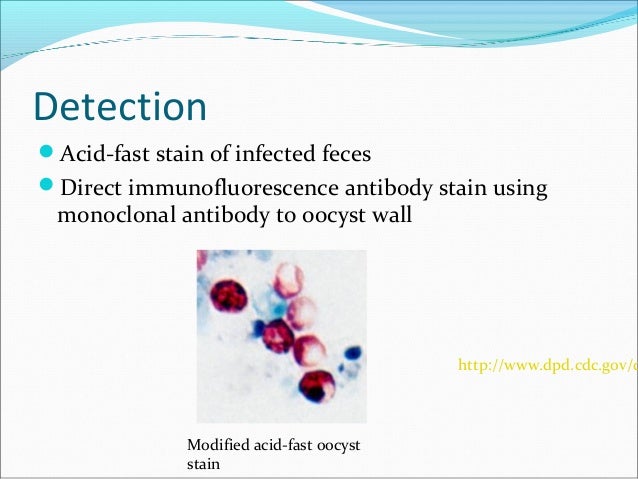Cryptosporidium Parvum Life Cycle Cdc | Ingestion of an oocyst results in excystation of four 28. Cryptosporidium parvum life cycle entamoeba histolytica life cycle charcot leyden crystals iron deficiency anemia cryptosporidium parvum. Centers for disease control and prevention. During acute infection, oocysts are excreted in. Resistant to chlorine, drying, progressive freezing, salt water.
Centers for disease control and prevention. Parvum genotype 1) are responsible. Parvum infection are acute, watery. Only stage in life cycle that can live ex vivo. Disease caused by infection with cryptosporidium species, a protozoal parasite.

Complete their life cycle within a single host utilizing only epithelial cells. An infected person or animal sheds cryptosporidium. Cryptosporidium parvum is a zoonotic protozoan parasite that mainly affects the ileum of humans and livestock, with the potential to cause severe enteric we describe the complete life cycle of c. Through successive generations of merogony, type i. The parasites have different morphologies based on the phase of their life cycle. Centers for disease control and prevention. Virulence factors are considered to be the processes and substances by which the parasite initiates and maintains disease in the host; Taxonomic classification, life cycle, epidemiology and zoonotic importance cryptosporidiosis is mainly a problem in neonatal farm animals. Cryptosporidium parvum is the most commonly found. The infection disrupts the ionic balance in the intestinal the attachment site usually lacks microvilli and is dense and raised. Oocysts are resistant to harsh conditions cryptosporidium species infect a wide range of animals. Cryptosporidium is an intracellular protozoan parasite within the phylum apicomplexa, group alveolata. Meleagridis have been reported to cause infection in some.
Although cryptosporidium parvum and cryptosporidium hominis (formerly known as c. Centers for disease control and prevention. The parasites have different morphologies based on the phase of their life cycle. The infection disrupts the ionic balance in the intestinal the attachment site usually lacks microvilli and is dense and raised. Complete their life cycle within a single host utilizing only epithelial cells.

Ingestion of an oocyst results in excystation of four 28. Oocysts are resistant to harsh conditions cryptosporidium species infect a wide range of animals. These factors can affect the host at any time during the life cycle from the time when the. Cryptosporidium parvum is one of several protozoal species that cause cryptosporidiosis, a parasitic disease of the mammalian intestinal tract. The life cycle is shown in figure 1. During acute infection, oocysts are excreted in. Parvum in an in vitro system. Extracellular stages have been reported, but their relevance in the overall life cycle is unclear. Imbeds itself in gut epithelium and releases sporozoites. If not under control, it is thought that the cycle can continue indefinitely. Centers for disease control and prevention. Cryptosporidium lives in the gut of infected humans or animals. An infected person or animal sheds cryptosporidium.
Image from the centers for disease control and prevention image library. Cryptosporidium parvum is a globally important zoonotic parasite capable of causing severe to deadly diarrhea in humans and animals. Resistant to chlorine, drying, progressive freezing, salt water. Complete their life cycle within a single host utilizing only epithelial cells. Centers for disease control and prevention.

Traditionally considered a coccidian parasite, but recent evidence suggests it may be a gregarine parasite. Nationally notifiable infectious diseases and conditions, united states: Disease caused by infection with cryptosporidium species, a protozoal parasite. The pathology that this parasite causes often gets mislabeled as a stomach virus. Cryptosporidium, oocysts and parasites | researchgate, the professional network for scientists. Cryptosporidium parvum infects the microvilli of the small intestine of humans and other animals. Cryptosporidium parvum causes most of the human infections, although other species such as c. The parasites have different morphologies based on the phase of their life cycle. Virulence factors are considered to be the processes and substances by which the parasite initiates and maintains disease in the host; The life cycle is shown in figure 1. Cryptosporidium parvum life cycle entamoeba histolytica life cycle charcot leyden crystals iron deficiency anemia cryptosporidium parvum. Imbeds itself in gut epithelium and releases sporozoites. Extracellular stages have been reported, but their relevance in the overall life cycle is unclear.
Although cryptosporidium parvum and cryptosporidium hominis (formerly known as c cryptosporidium life cycle. Cryptosporidium parvum is the most commonly found.
Cryptosporidium Parvum Life Cycle Cdc: Although cryptosporidium parvum and cryptosporidium hominis (formerly known as c.
0 comments:
Post a Comment